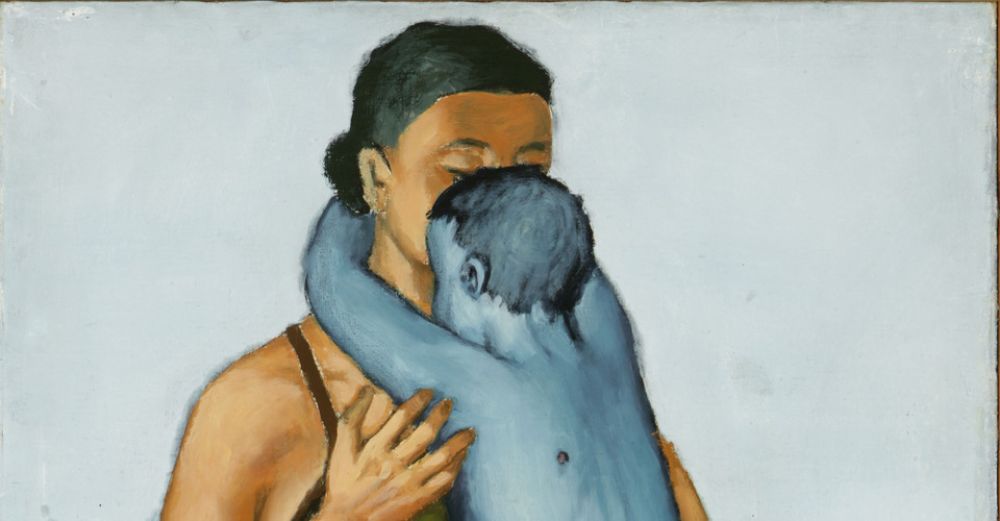- News
- Events
- Oneg Shabbat
- Collections
- Research
- Exhibitions
- Education
- Publishing Department
- Genealogy
- About the Institute
- Bookstore


A painting that does not leave us indifferent and is probably going to haunt us for a long time is “Mother with a killed child” by Andrzej Wróblewski.
The artwork painted in 1949 takes an important place on the exhibition “Polish art and the Holocaust”. Although it does not relate clearly and directly to the Holocaust, it leads to a broader view, a more general understanding of a child’s death and the pain of its mother facing this tragic fact. The painting makes us aware of how much children’s and mothers’ suffering was caused by the Holocaust. While looking at it, we are thinking of a particular case, and not just about the numbers of the murdered. Horrifying, but still only numbers.
The ascetic composition — a figure of a mother holding her baby’s neck form a triangle. The mother is painted in a sitting position, whereas the child climbs up on her and puts its hands around her neck. It is impossible not to have the impression that it freezes like water — is transformed into a block of ice. Freezes.
The colors of the work are limited to only a few: dark green, which the mother’s dress is painted in, and yellow shades showing the tiredness of the mother’s skin. The painter consciously limits himself to only a few colors. Surprising is the fact that there is no expected color of blood. Even the narrowest stream of blood. In the child’s body we can only see a trace after the bullet — navy blue. There are no pompous gestures. We cannot see any grimaced faces. There is only silent death. Silent despair. Everything congeals. We assume the presence of death even though we cannot see it. Maybe it is for the best. We should not be able to see everything, everywhere. Sometimes it is better when some things remain hidden before our sight.
In the artist’s comments, we also will not be able to find the answer to the question of why he used blue to show death. Of course, we can speculate, what we do, but nothing else. A friend of Wróblewski’s from college times, Andrzej Wajda, recalls the artist’s response to the question about the blue,
”Andrzej was a very ironic person. Everything that was a true mystery of his actions, he turned into a joke. He revealed his true self very reluctantly, he was not fond of confiding. I asked him once, “Why do you paint all the characters of the dead with blue?” He answered, “ I have a huge tube of Prussian blue, and, as you know, it is a very efficient paint.” I knew that all those dead came to him. He could not get rid of them for the death constantly accompanied him.